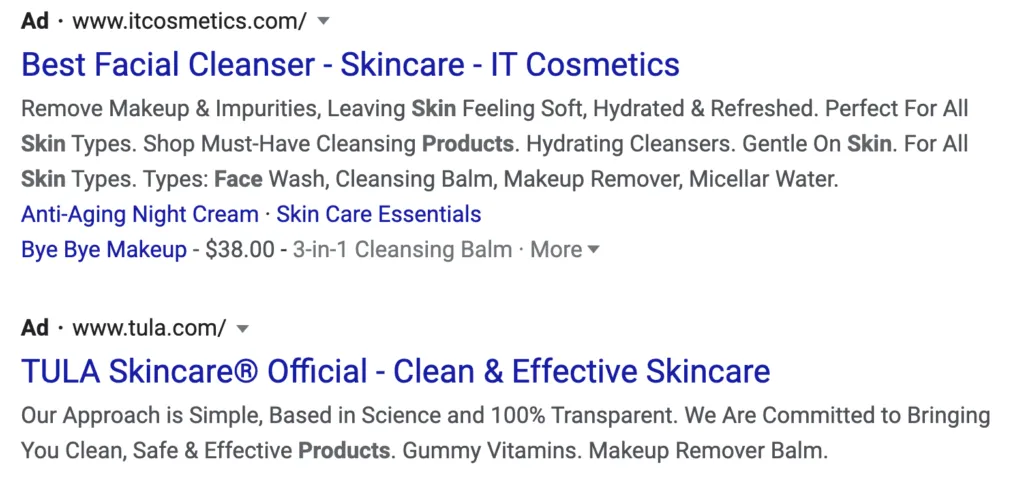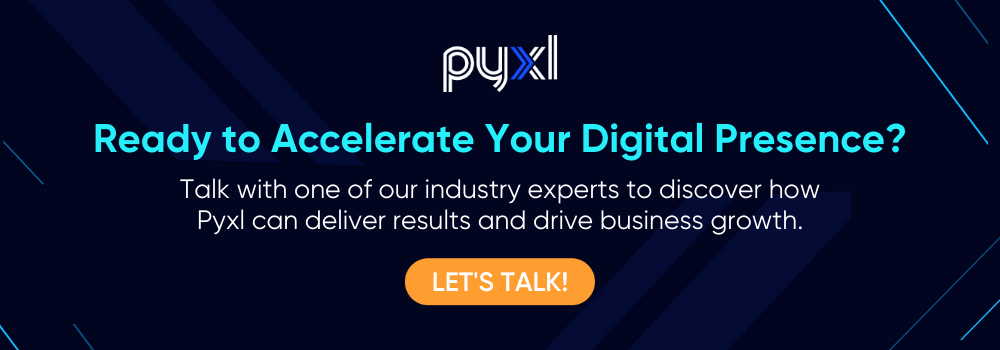No industry loves acronyms and cryptic terms quite like the digital marketing industry. The jargon can be helpful if you’re an insider, but confusing to anyone not in the know—and even to some of us in the know. Pyxl’s ethos is about turning marketing into an integral part of business growth, and that begins with translating marketing lingo into actually meaningful concepts. We’ve published some other posts about our lexicon (and more to come!), but today let’s break down pay per click (PPC) marketing and cost per click (CPC) marketing.
PPC – Pay Per Click Marketing
PPC, or pay per click, is an essential component of your marketing strategy that, when executed correctly, can increase your volume of top-of-funnel leads. By increasing your brand’s overall reach, PPC campaigns expose your brand to a larger, more diverse audience. Once active, PPC advertising allows your company to appear in search engines’ results pages based on specific keywords and phrases your potential buyer is searching for. Functionally, what happens is that you pay for the ad only when users click on it (hence ‘pay per click’), incentivizing search engines to show it to the most relevant audiences.
Note: The rank your company achieves on a search results page is dependent on your keyword bidding strategy. We suggest conducting market research to find what terms and phrases your audience is searching for and bidding on the most relevant ones. Be strategic!
Let’s see how PPC ads look in action. If you search, for example, ‘skin care products’ on Google, you’ll notice the first 2-3 results appear with a small box in the corner noting that the result is an ‘Ad.’ That small ad indicator shows us that these specific, highly ranked ads are the result of a well run PPC campaign.

Once your strategies are set and you’re ready to implement, Google Ads will allow you the ability to create and monitor your PPC campaigns to ensure things are running smoothly.
CPC – Cost Per Click Marketing
Once your campaign is up and running, it’s important to measure the efficiency and relevancy of your ads to make sure they’re effective – this is where CPC marketing, or cost per click, comes in handy. CPC measures the overall cost per click of your PPC ads. For example, if you paid $100 for your PPC ad and it receives 100 clicks, you’re spending $1 per ad click.
(Total Money Spent) ÷ (Total Measured Clicks) = Cost Per Click
As you begin to score more clicks than what you initially paid for, your CPC will lower, which is a clear indicator of a successful ad campaign.
It’s important to note that ‘CPC’ shows up in many other paid media channel reports besides PPC, but it means the same thing regardless of where you see that acronym.
Key Takeaway:
PPC=approach.
CPC=performance metric.
Essentially, PPC and CPC are two sides of the same coin. PPC marketing is a specific marketing channel or approach, while CPC marketing is a performance metric. If you’re interested in figuring out how well your PPC campaign is performing, start by measuring CPC—and then talk to your sales team to figure out how many of those clicks turn into qualified leads. In some cases, it’s helpful to actually increase your cost per click if it will help you reach a more qualified audience or if it will help you rank above key competitors.
And if this is all still Greek to you, we’re here to help. Pyxl is a digital agency with years of experience helping businesses with their ad strategy. Get in touch with us to talk through all these acronyms and what they mean for your bottom line today.
Updated: Jul 12, 2023
 Kati Terzinski
Kati Terzinski
 Erin Murray
Erin Murray